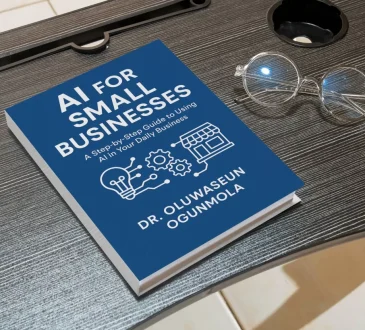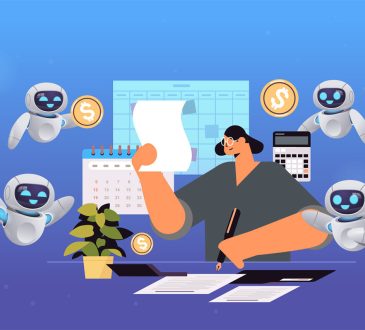What’s New in Artificial Intelligence This Week? – Full Coverage

Artificial Intelligence continues to evolve at a dizzying pace, with new breakthroughs, policy debates, and industry shifts emerging every week. This week was no different—AI made headlines across research labs, corporate boardrooms, creative industries, and global governments. From groundbreaking model releases to new ethical challenges, here is the full coverage of everything important that happened in AI this week.
1. Next-Generation AI Models Push the Boundaries of Reasoning and Autonomy
The biggest story in the AI world this week is the release and preview of several next-generation models that significantly advance reasoning, planning, and autonomous task execution. These new models demonstrate improved long-context understanding, meaning they can analyze and reason over much larger bodies of text and data. This allows them to generate more accurate insights, handle multi-step workflows, and maintain complex instructions over extended conversations.
Researchers emphasized that these models are not just becoming more powerful—they’re becoming more efficient. New training techniques have made it possible to run large models on smaller hardware without sacrificing intelligence. This shift is expected to make advanced AI more accessible to startups, research institutions, and developers around the world.
Another major trend is the rise of AI agent frameworks, enabling models to take actions across digital environments—like booking appointments, analyzing spreadsheets, updating CRM systems, or performing research tasks with minimal human oversight. The debate around “autonomous agents” continues, but developers say the priority now is creating reliable, transparent, and high-control systems.
2. Governments Strengthen AI Regulations and Safety Standards
On the policy front, multiple governments unveiled new steps toward regulating AI deployment and ensuring safe development practices. Lawmakers are particularly focused on three areas:
a. Transparency Requirements
New rules introduced this week demand clearer disclosure when AI-generated content is used in political ads, educational materials, or financial advice. The goal is to combat misinformation and ensure that audiences know when they are interacting with synthetic media.
b. High-Risk AI System Audits
Several governments are exploring mandatory audits for high-risk AI systems, especially those used in healthcare, banking, defense, and public administration. These audits aim to evaluate accuracy, fairness, bias, and privacy risks before the systems are widely deployed.
c. AI Safety R&D Funding
Significant new funding has been allocated toward researching AI safety frameworks, robust model testing, and advanced cybersecurity measures designed to protect AI models from data poisoning and adversarial attacks. Policymakers are increasingly recognizing that AI safety is not a one-time requirement but an ongoing process.
This week’s developments make it clear that lawmakers are now moving faster to match the pace of AI innovation—something experts have long urged.
3. AI in Healthcare: Diagnostics, Drug Discovery, and Personal Care
Healthcare AI saw major advancements this week, particularly in early disease detection and drug discovery.
Several research teams introduced AI systems capable of identifying early stages of illnesses such as lung cancer, heart disorders, and neurodegenerative diseases using imaging data, speech patterns, and even subtle behavioral changes. These systems aim to empower doctors with faster, more accurate diagnostics, especially in regions facing shortages of medical specialists.
The drug discovery field is also experiencing rapid acceleration. New AI-assisted laboratory methods can generate potential drug candidates in days instead of months. Pharmaceutical companies reported new breakthroughs this week in using AI to simulate molecular interactions, reducing the time and cost of pre-clinical research.
Meanwhile, consumer healthcare applications—like AI-based wellness coaching and personalized nutrition planning—continue to expand. This week saw new partnerships between wearable manufacturers and AI companies promising deeper real-time health analysis and more actionable recommendations.
4. AI in the Workplace: Productivity Tools and Automation Trends
AI continues to reshape the modern workplace. This week’s updates show a clear shift from simple productivity tools to end-to-end automation platforms.
Businesses are adopting AI assistants for tasks such as:
- generating reports and market summaries
- analyzing customer behavior
- drafting legal and compliance documents
- managing email workflows
- assisting in financial forecasting
One of the biggest advancements this week comes from enterprise tools capable of connecting to internal company databases while maintaining strict privacy boundaries. This allows AI to provide customized insights based on real-time business data.
Concerns about job displacement persist, but analysts note that demand for AI-skilled workers is rising sharply across nearly all industries. Companies are now investing heavily in employee upskilling programs to ensure their workforce adapts to the AI-driven transition.
5. Creative Industries Embrace AI, With New Rules Emerging
Music, filmmaking, writing, and design saw a fresh wave of AI-powered creativity this week.
In Film and Video Production:
New AI tools introduced this week allow creators to generate realistic scenes, animate characters, clean up footage, and create multilingual voiceovers with near-human expression. These tools are helping independent filmmakers drastically cut production costs.
In Music:
AI-assisted composition tools are becoming more popular with professionals. Several artists demonstrated how AI can help with songwriting drafts, melody exploration, and remixing while maintaining the artist’s creative control.
In Publishing and Journalism:
AI-generated drafts are becoming part of editorial workflows, but major organizations are setting stricter internal guidelines to maintain originality and authenticity. Transparency and attribution remain hot topics.
Creative professionals continue to debate the long-term impact of AI, but this week’s developments suggest that most industries are moving toward hybrid models where human creativity and AI assistance coexist.
6. Robotics: AI Makes Physical Machines Smarter
This week brought a series of robotics announcements showing how improved AI models are powering more capable and adaptable machines.
New prototypes revealed:
- household robots with better coordination and object recognition
- warehouse bots capable of learning tasks by demonstration
- factory robots that can adjust to unpredictable environments
- personal companion robots offering more natural conversation and emotional responsiveness
These improvements are largely driven by better multimodal models capable of processing sight, sound, movement, and language simultaneously.
7. AI Security, Ethics, and Misinformation Challenges Grow
As AI’s capabilities grow, so do the concerns about misuse, deepfakes, fraud, and harmful manipulation. This week’s security researchers highlighted new vulnerabilities, including AI impersonation attacks and deceptive synthetic media.
In response, developers are rolling out enhanced watermarking, content detection systems, and identity verification tools. Ethical research teams are urging companies to prioritize safety guardrails just as much as performance metrics.
8. The Bottom Line: AI’s Momentum Is Unstoppable
This week’s developments remind us that AI continues to touch every industry and every aspect of modern life. From breakthroughs in reasoning and robotics to global policy reforms and creative experimentation, AI’s evolution shows no sign of slowing.
As innovation accelerates, the conversation around safety, ethics, and responsible deployment becomes even more essential. The future of AI will not only be defined by what the technology can do, but by the collective decisions made by developers, regulators, and society.




